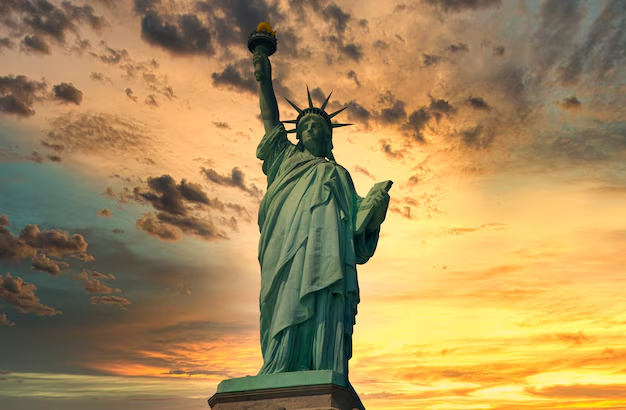In the world of global logistics, Asia has long been known as the engine room. But in 2025, the region is shifting into something more powerful: the command center.
What’s changed? The short answer: nearly everything. From cross-border e-commerce booms and smart ports to green logistics and policy reforms, Asia’s logistics sector is being reshaped not just by demand—but by design.
Let’s unpack the five defining forces shaping logistics across Asia in 2025—and what they mean for businesses navigating supply chains across the region.
1. India and China: Parallel Powerhouses, Different Paths
China remains a logistics juggernaut—but the way it moves goods today looks different than even five years ago. With government-backed investments in smart warehousing, AI-driven fleet management, and the world’s most connected ports, China is doubling down on automation and precision.
India, meanwhile, is focused on infrastructure scale. Thanks to programs like Gati Shakti and the rapid growth of dedicated freight corridors, logistics efficiency is finally catching up to demand.
The key distinction in 2025:
- China leads with tech, creating models for intelligent logistics ecosystems.
- India leads with volume and access, building the backbone for domestic and cross-border trade.
Together, they’re reshaping regional logistics flows.
2. Cross-Border Commerce Is Reshaping Last-Mile Expectations
Ten years ago, buying a product from another country often meant waiting weeks. In 2025, cross-border commerce in Asia is measured in hours—not days.
E-commerce platforms, regional free trade pacts (like RCEP), and streamlined customs protocols have slashed lead times and red tape. But this new normal comes with pressure: last-mile fulfillment must now scale across language, regulation, and infrastructure variability.
To stay competitive, logistics players are:
- Setting up micro-fulfillment centers closer to consumer hubs.
- Using AI to predict demand and adjust routing in real time.
- Partnering with local delivery providers who understand the terrain.
It’s not just about delivering fast—it’s about delivering smart.
3. Green Logistics Isn’t Optional Anymore
Environmental regulation is no longer a Western-only phenomenon. In 2025, governments across Asia are taking sustainability seriously, and logistics providers must follow suit.
Whether it’s India's green hydrogen freight corridors or China’s aggressive EV adoption for delivery fleets, decarbonizing the supply chain is now part of doing business.
What’s on the agenda:
- Carbon-neutral warehouses using solar and energy-efficient designs.
- ESG-compliant route planning, reducing fuel and emissions.
- Increased demand for transparency, with clients asking for carbon footprint reports as part of standard service.
Companies that move faster on sustainability are earning more than just regulatory approval—they’re earning loyalty from eco-conscious customers.
4. Digitalization: From Trend to Table Stakes
Digital transformation in logistics isn’t new, but in 2025, it’s no longer optional. Whether you're a third-party logistics (3PL) player or a manufacturer running your own fleet, digital systems are how things run now.
We’re seeing widespread use of:
- Blockchain-based documentation for faster, fraud-resistant trade.
- IoT sensors for temperature, humidity, and shock tracking in real time.
- Predictive analytics that help forecast port delays or warehouse bottlenecks.
And it's not just the giants investing. Mid-sized players across Southeast Asia and South Asia are using cloud-based logistics management platforms to gain a competitive edge.
The result? Fewer disruptions, greater visibility, and smarter planning.
5. Talent is the Tipping Point
All the tech in the world can’t move goods without people. But the logistics industry in Asia faces a growing challenge in 2025: skilled labor.
With increasing automation, there’s rising demand for workers who can manage digital tools, troubleshoot AI-driven systems, and optimize tech-enabled fleets. But that talent is still catching up to the speed of change.
What forward-thinking companies are doing:
- Partnering with vocational and technical institutes to train next-gen logistics talent.
- Upskilling internal teams with digital learning modules.
- Offering flexible work models to attract younger talent into warehouse and supply chain roles.
The companies that invest in talent today won’t just survive—they’ll dominate tomorrow.
What This Means for Strategic Decision-Makers
For manufacturers, retailers, and logistics providers alike, 2025 is a year to think long-term. The pace of innovation across Asia isn’t slowing down—if anything, it’s accelerating. But the real winners will be those who invest in:
- Regional intelligence over global assumptions
- Partnerships that prioritize agility
- Logistics strategies that align with sustainability and scalability
Final Thoughts
Asia’s logistics sector in 2025 is no longer just playing catch-up—it’s setting the pace. Whether you’re entering a new market or rethinking your supply chain, understanding regional trends isn’t just helpful—it’s essential.
At INJ Partners, we help businesses translate regional complexity into clear, actionable strategy. Let’s build smarter, faster, and greener—together.








